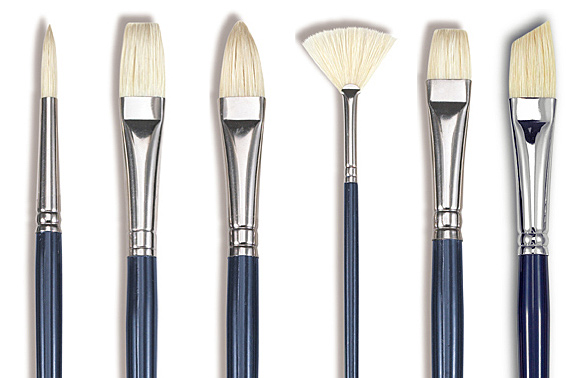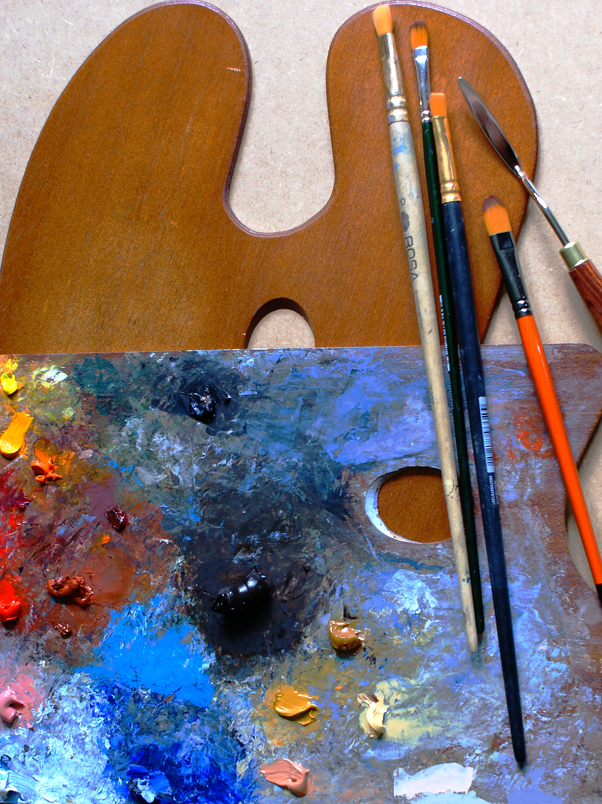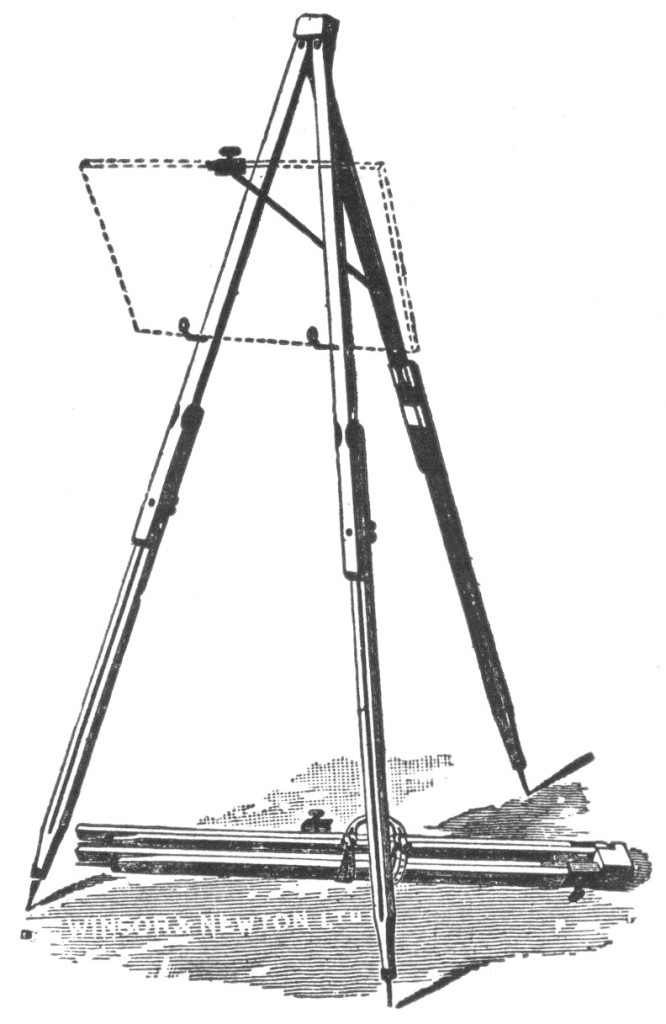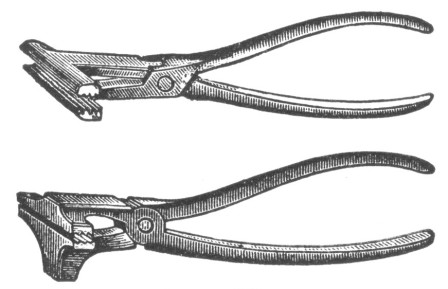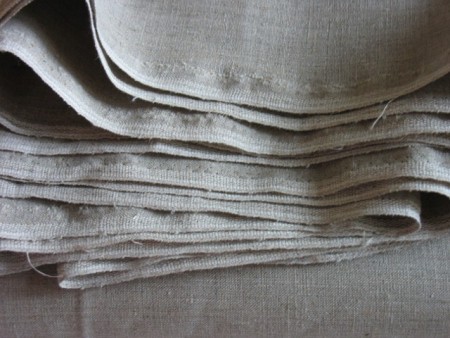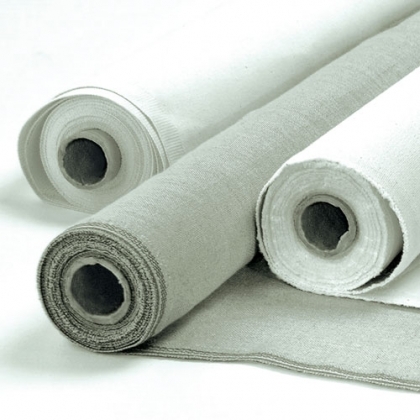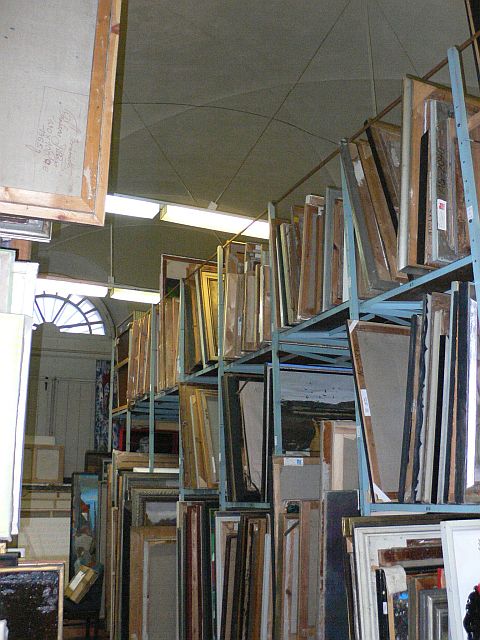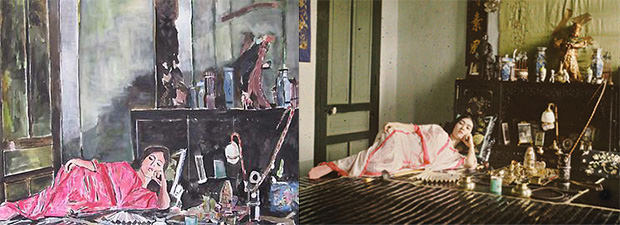On 19 Aug, 2012 With
Oil painting essential materials: Bristle and Sable BRUSHES Bristle and Sable.—The brushes suitable for oil painting are of two kinds,—bristle and sable hair. Of the latter, red sable are the only ones you should get. They are expensive, but they have a spring and firmness that the black sable does not have. Camel’s hair is out of the question. Don’t get any, if you can only have camel’s hair. It is soft and flabby when used in oil and you can’t work well with such brushes. The same is true of the black sable. But though the red sablesare expensive, you do not need many of them, nor large ones, so the cost of those you will need is slight. …
Read More
On 17 Aug, 2012 With
Oil painting essential materials: BRUSHES An old brush that has been properly cared for is generally better than a new one. It seems to have accommodated itself to your way of painting, and falls in with your peculiarities. It is astonishing how attached you get to your favorite brushes, and how loath you are to finally give them up. What if you have no others to take their places? Don’t look upon your brushes as something to get as few of as possible, and which you would not get at all if you could help it. There is nothing which comes nearer to yourself than the brush which carries out your idea in paint. You should be always on the…
Read More
On 15 Aug, 2012 With
Oil painting essential materials: EASELS The important thing in an easel is that it should be steady and firm; that it should hold the canvas without trembling, and so that it will not fall as you paint out towards the edges. You often paint with a heavy hand, and you must not have to hold on to your picture with one hand and paint with the other. Nothing is more annoying than a poor easel, and nothing will give you more solid satisfaction, than the result of a little generosity in paying for a good one. The ideal thing for the studio is, of course, the great “screw easel,” which is heavy, safe, convenient, and expensive. We would like to…
Read More
On 12 Aug, 2012 With
Oil painting materials: Stretchers Stretchers.—The keyed stretcher, with wedges to force the corners open and so tighten the canvas when necessary, is the only proper one to use. For convenience of use many kinds have been invented, but you will find the one here illustrated the best for general purposes. The sides may be used for ends, and vice versa. If you arrange your sizes well, you will have the sides of one size the right length for the ends of another. Then you need fewer sizes, and they are surer to pack evenly. Stretching.—You will often have to stretch your own canvases, so you should know how to do it. There is only one way to make the canvas lay smoothly…
Read More
On 9 Aug, 2012 With
Oil painting materials: Grounds Grounds.—The color of the grounds should be of interest to you. Canvases are prepared for the market usually in three colors,—a sort of cool gray, a warm light ochrish yellow, and a cool pinkish gray. Which is best is a matter of personal liking. It would be well to consider what the effect of the ground will be on the future condition of the picture when the colors begin to effect each other, as they inevitably will sooner or later. Vibert in his “La Science de la Peinture” advocates a white ground. He says that as the color will be sure to darken somewhat with time, it is well that the ground should have as little to do…
Read More
On 7 Aug, 2012 With
Oil painting materials: CANVASES and STRETCHERS Grain.—The question of grain is not easy to speak about without the canvas, yet it is often a matter of importance. There are many kinds of surface, from the most smooth to the most rugged. Some grain it is well the canvas should have; too great smoothness will tend to make the painting “slick,” which is not a pleasant quality. A grain gives the canvas a “tooth,” and takes the paint better. Just what grain is best depends on the work. If you are going to have very fine detail in the picture use a smoothish canvas; but whenever you are going to paint heavily, roughly, or loosely, the rough canvas takes the paint…
Read More
On 5 Aug, 2012 With
Oil painting materials: CANVASES, STRETCHERS AND PANELS You should have plenty of canvas on hand, and it would be well if you had it all stretched ready for use. Many a good day’s work is lost because of the time wasted in getting a canvas ready. It is not necessary to have many kinds or sizes. It is better in fact to settle on one kind of surface which suits you, and to have a few practical sizes of stretchers which will pack together well, and work always on these. You will find that by getting accustomed to these sizes you work more freely on them. You can pack them better, and you can frame them more conveniently, because one frame…
Read More
On 4 Aug, 2012 With
Singer Bob Dylan accused of plagiarizing photographs Singer Bob Dylan is being accused of plagiarism after several paintings in his recent art show were found to have “striking resemblances” to works by photographers such as Henri Cartier-Bresson, Dmitri Kessel and Léon Busy. An example is Dylan’s painting titled Opium(above left), which appears to be directly copied from Busy’s Vietnam (above right). Dylan had copied six photographs — one of which an artificial Photoshop edit — from his Flickr stream. In response, the gallery hosting the show changed the exhibition’s description from a “visual diary” of Dylan’s travels to a “visual reflection”. A spokesperson tells The Guardian: “While the composition of some of Bob Dylan’s paintings are based on a variety of sources, including archival, historic images,…
Read More
On 1 Aug, 2012 With
How to economize on Oil Painting Tools There is a false implication in the saying that “a poor workman blames his tools.” It is not true that a good workman can do good work with bad tools. On the contrary, the good workman sees to it that he has good tools, and makes it a part of his good workmanship that they are in good condition. In painting there is nothing that will cause you more trouble than bad materials. You can get along with few materials, but you cannot get along with bad ones. That is not the place to economize. To do good work is difficult at best. Economize where it will not be a hindrance to you. Your…
Read More
On 31 Jul, 2012 With
Acrylic painting techniques How to Make a Painting Look Old 1. Allow the painting to dry if just completed. Apply clear acrylic to the painting to act as a base for the crackle paint application that will give your painting some age. The clear acrylic should be applied evenly to the surface of the painting following the original brush strokes. Allow the clear acrylic to dry before moving forward. 2. Prepare the crackle paint by adding the colors to it that closely match the areas you are trying to age prematurely. Not using color will result in the crackle paint turning white. Use colors that match the painting so that when it dries, it will look as though the paint is aged. Use…
Read More


